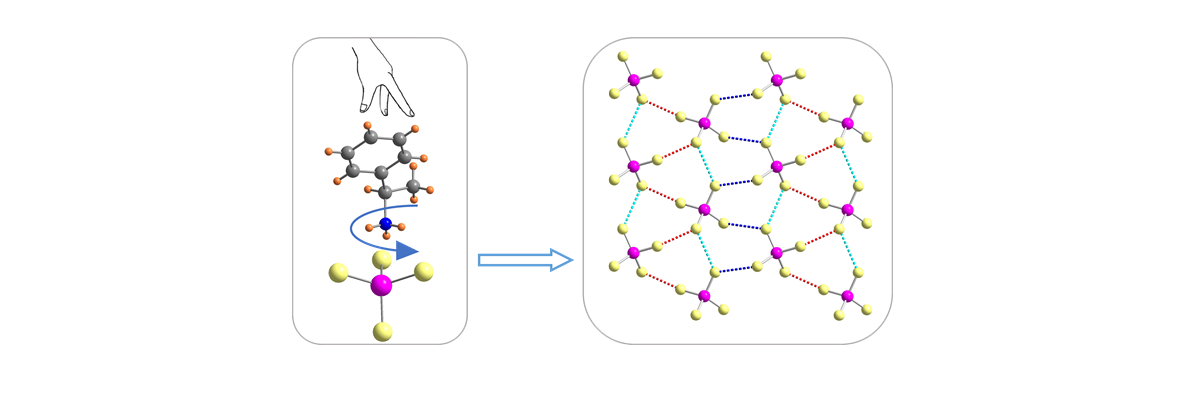Unique chiro-optical properties of hybrid material

Illustration of transferring the abundant chirality from organic units to the inorganic units of hybrid material
Chiral organic molecules are abundantly available. However, these generally have very large bandgaps, exhibiting chiro-optical activities in the UV region. In addition, the structural softness of such organic molecules makes it difficult to stack them suitably, and this inability often results in poor charge transport capability in optoelectronic devices made from such molecules. In this regard, organic-inorganic hybrid materials have recently emerged as ideal candidates for optoelectronic devices due to their outstanding optoelectric properties. Therefore, it becomes a naturally intriguing issue to seek ways to transfer the abundant chirality of organic molecules to the inorganic units of suitable hybrid materials to tailor desired chiro-optical properties in longer wavelengths compared to the UV region.
Pursuing this goal, a team of researchers introduced the formally 0-Dimensional (R-/S-MBA)2CuBr4, containing chiral R-/S-α-methyl benzylamine (R-/S-MBA) connected to highly distorted, relatively isolated CuBr4 tetrahedral units in alternating layers, deriving extraordinary chiro-optical properties. The team consists of Ranjan Das and DD Sarma at the Solid State and Structural Chemistry Unit, IISc, along with Modasser Hossain and Pralay K Santra at CeNS, Bengaluru, Arup Mahata and Filippo De Angelis at Perugia, Italy, and Diptikanta Swain at ICT-IOC, Bhubaneswar.
In this study, the researchers described how the pronounced chirality of the organic molecule (R-/S-MBA) is abundantly transferred to the inorganic units, CuBr4. In the orange-red part of the visible spectrum, this compound’s chiral anisotropy factor, gCD, is the highest reported for any hybrid material. The study shows that the chirality is transferred from the organic units to the inorganic layer through the extensive asymmetric hydrogen bonding network and electronic coupling, driving the CuBr4 tetrahedral units to follow the 21-screw axis.

REFERENCE:
Das R, Hossain M, Mahata A, Swain D, Angelis FD, Santra PK, and Sarma DD, Unique Chiro-optical Properties of the Weakly-2D (R-/S-MBA)2CuBr4 Hybrid Material, ACS Materials Letters (2023).
Ranjan Das et al., ACS Materials Lett. 5 (2023) 1556–1564 (https://doi.org/10.1021/acsmaterialslett.3c00268)
LAB WEBSITE:
https://sscu.iisc.ac.in/people/DDSarma/our-group-dd-sarma.html
https://twitter.com/DDSarmaGroup



